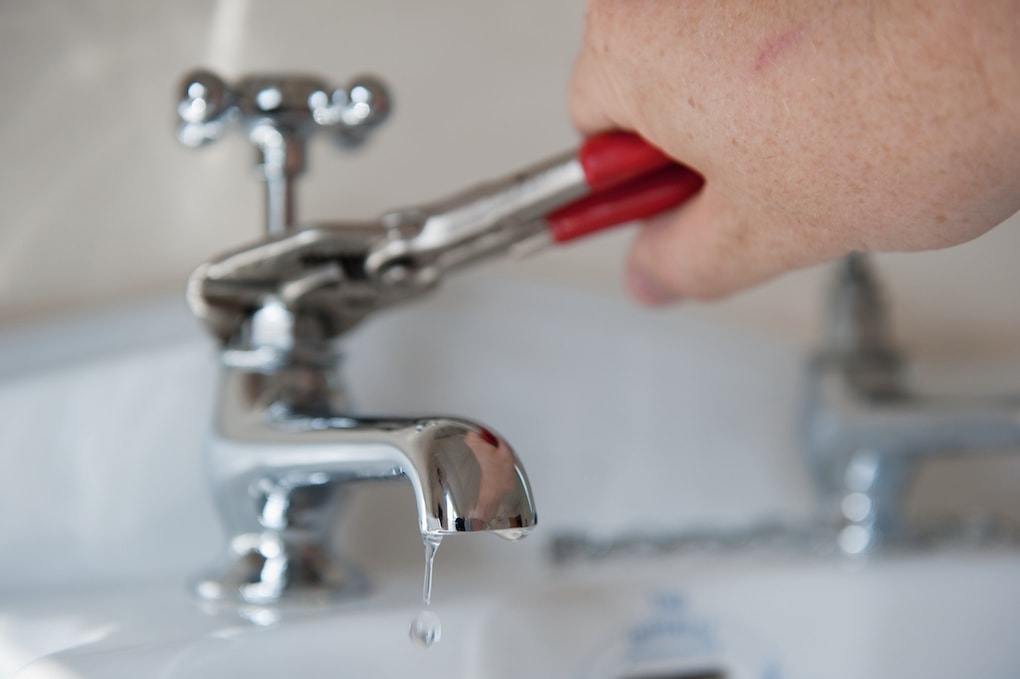Our Instruction to Resolving Low Water Pressure in Your Home
Our Instruction to Resolving Low Water Pressure in Your Home
Blog Article
We have unearthed this article pertaining to Dealing with Low Water Pressure in Your Home below on the web and figured it made good sense to quickly share it with you in this article.

Low water stress in your home can be a frustrating problem, affecting whatever from bathing to washing meals. If you're experiencing weak water circulation, there are several feasible causes and services to check out. In this guide, we'll discuss common reasons for low water stress and useful steps to attend to the issue efficiently.
Intro to Low Tide Pressure
Low water pressure occurs when the flow of water from your faucets, showers, and various other components is weak than usual. This can make everyday jobs a lot more difficult and much less effective. Recognizing the causes of low tide pressure is essential to discovering the best option.
Usual Causes of Low Tide Pressure
Faulty Pressure Regulators
Stress regulatory authorities are in charge of keeping constant water stress in your home. If they malfunction, it can lead to low tide pressure or uneven circulation throughout your house.
Local Water Supply Issues
Sometimes, the trouble exists outside your home. Community water concerns, such as main line leaks or maintenance work, can momentarily reduce water pressure in your area.
Pipe Obstructions
Over time, pipelines can come to be clogged with mineral deposits, sediment, or debris, limiting the flow of water. This is an usual problem in older homes with galvanized steel pipes.
Deterioration
Corrosion within pipelines can lead to leakages and decreased water stress. Rust accumulation can restrict water flow, specifically in aging plumbing systems.
Just How to Detect Low Water Pressure
Examining Pipelines
Evaluate visible pipelines for signs of leaks, corrosion, or obstructions. Pay attention to any unusual audios, such as banging or rattling pipelines, which might suggest concerns within the plumbing system.
Consulting with a Plumber
If you're unable to identify the reason for low water stress, take into consideration employing a specialist plumber to carry out a complete assessment. They can determine underlying issues and advise ideal remedies.
Checking Taps and Components
Begin by testing the water stress at various taps and components throughout your home. If the problem is isolated to specific locations, it may show local problems.
DIY Solutions to Fix Low Water Stress
Flushing Water Heater
Sediment build-up in the hot water heater can restrict circulation and decrease performance. Purging the storage tank periodically assists get rid of sediment and keep optimum efficiency.
Checking Stress Regulatory Authority
Make sure that the stress regulatory authority is working properly. Changing or replacing the regulator can assist restore appropriate water stress throughout your home.
Cleaning Up Aerators and Showerheads
Natural resources can gather in aerators and showerheads, decreasing water circulation. Eliminate and cleanse these elements on a regular basis to improve water pressure.
Clearing Up Clogs in Piping
For small obstructions, try making use of a plumbing serpent or chemical drainpipe cleaner to clear obstructions in pipelines. Be cautious when making use of chemicals and follow safety and security guidelines.
When to Call a Professional Plumber
If DIY initiatives fall short to settle the concern or if you think considerable plumbing issues, it's finest to look for help from a qualified plumber. They have the knowledge and devices to address intricate problems safely and successfully.
Safety Nets to Keep Water Pressure
Setting Up a Stress Booster
Consider mounting a pressure booster pump to improve water pressure in areas with constantly low flow. This can be especially advantageous for multi-story homes or buildings with high-demand fixtures.
Surveillance Water Use
Bear in mind water use practices and prevent ill-using the plumbing system. Simple modifications, such as staggering showers and washing lots, can help keep sufficient water pressure.
Normal Maintenance
Arrange routine maintenance for your plumbing system to avoid concerns such as deterioration, leaks, and blockages. Attending to small issues early can assist stay clear of even more considerable repairs later.
Conclusion
Taking care of low water stress can be frustrating, but recognizing the underlying causes and implementing suitable services can bring back optimum flow throughout your home. Whether it's cleaning up aerators, examining pipes, or consulting with a plumber, taking aggressive steps can guarantee a constant supply of water for your everyday demands.
How to Fix Low Water Pressure
Have you noticed the water pressure in your shower or taps seem a little weak? If so, the water pressure in your home may be lower than it should be.
Low water pressure can affect many areas of your home. You might notice it taking longer to fill the bathtub or washing machine or that you’re not getting the pressure you need from your garden hose.
These pressure changes can be sudden or may happen over time. It may take a little investigating to find the cause, but there’s usually an easy solution.
Testing Water Pressure in Your Home
One easy way to check water pressure at home is with a water pressure gauge. You can find one online or at a hardware or home improvement store.
Before you check the pressure, make sure the taps and appliances that use water are turned off. Then, connect the gauge to the exterior hose bib or tap.
Turn the tap up all the way and read the gauge to see the water pressure. If you don’t have an exterior tap, you can disconnect the hose of your washing machine and connect the water pressure gauge to it.
Make sure all your water-using appliances are turned off. Turn the faucet on high to read your home’s pressure or PSI.
If the idea of checking water pressure or dealing with plumbing issues on your own seems a bit daunting, you can call a professional plumbing service to handle the job.
They can help you find the root of your water pressure issues and determine the best solution to the problem.
Clear the Clogs
A clogged pipe is one of the most common issues that leads to low or no water pressure. Pipes can become clogged due to a buildup of mineral deposits.
This is especially true if you have hard water where you live. Even a small clog can reduce the pressure of water running through the pipes.
Clogs usually build up over time. People notice when it affects their showers or the appliances that use water every day.
There are products and tools for clearing clogs on your own or you can call a plumber. They have the expertise and the right tools to locate clogs and determine whether it’s better to repair or replace the pipe.
Clean or Replace Corroded Pipes
Do you live in an older home where the plumbing is decades old? If so, your pipes are probably prone to corrosion. This is especially true if the pipes are galvanised steel.
This material is likely to corrode after 20 years of use. Brass pipes average 40 to 70 years before corroding, while copper pipes are good for 50 years or more.
If you installed extra plumbing fixtures after building or moving into your home, there’s a good chance you could have corroded pipes. The more plumbing fixtures in the home, the harder your pipes have to work, and the more likely they will corrode.
It’s important to address pipe corrosion. Failing to fix the problem can lead to cracked pipes, major leaks, and water damage in your home.
Swapping out old plumbing pipes reduces the risk of corrosives. Updated plumbing produces cleaner and better-tasting water, too.
Seal the Leaks
Another cause of low water pressure could be a leak in the pipes or in the water line. Small cracks or holes leak water into unintended areas before the water can reach the various taps in your home.
If your basement or foundation has flooded, it’s a strong sign of leaking pipes. You can look for leaks by turning off the taps for a couple of hours. Then, check the water metre reading.
An increase may indicate a leak. To see or access the plumbing, check for wet spots or pooling water. If you find a leaking pipe, there could be more.
You may not be able to reach these spots on your own, so it’s a good idea to enlist the help of a professional plumber at this point. They can check all your pipes for leaks and repair or replace damaged ones to restore adequate water pressure.
It’s important to address water leaks right away. Standing water can lead to mould or mildew growing in your home.
Replace the Pressure Regulator
Do you have a pressure regulator in your house? It’s a valve that helps keep the water pressure entering your home at safe levels. A functioning regulator keeps the pressure constant and flowing at around 50 PSI.
High water pressure may damage your plumbing and lead to excess stress on your appliances that use water. When a pressure regulator fails, it can lead to an increase or decrease in pressure.
Sediment or debris in the value can cause a blockage. You can check the pressure regulator by attaching the pressure gauge to an outdoor spigot. If the pressure reads lower than the valve reported, the regulator may be faulty.
A plumbing expert can assess whether the pressure regulator is working for your home. It’s important to replace a failed regulator.
Instal a Booster Pump
Sometimes you may look everywhere to discover the cause of low water pressure but not find an answer. Talk to your neighbours to see if they’re having similar issues.
If other homeowners near you are experiencing water pressure problems, installing a booster pump may be a good solution. It can increase water pressure to the main supply line that runs to your home’s system.
An experienced pro in UK plumbing issues can help you install a booster and restore the water pressure to your house.
How to Fix Low Water Pressure
If you notice the water pressure in your home is less than what it should be, there are a variety of possible problems and solutions. If you’re not a plumbing expert or don’t have the time to spare for DIY plumbing issues, call the pros instead.
At PM247, we know how to improve low water pressure in your home. Simply tell us the plumbing issue you’re having and we will take it from there.
For over 20 years, we’ve provided professional plumbing, drainage, roofing, heating, and electrical services to our customers. We would love to help you, too!
https://www.pm247.co.uk/blog/how-improve-low-water-pressure/

I'm just very serious about 4 Ways to Troubleshoot Low Water Pressure and I really hope you enjoyed our entry. In case you enjoyed our blog entry if you please do not forget to share it. Bless you for your time. Revisit us soon.
Call Today Report this page